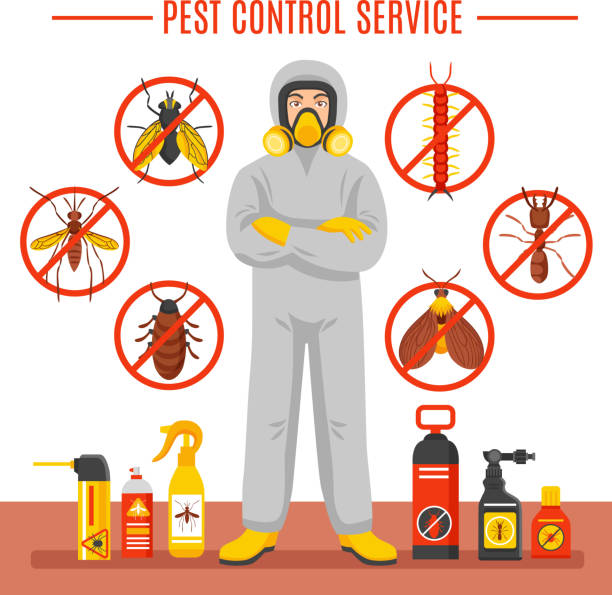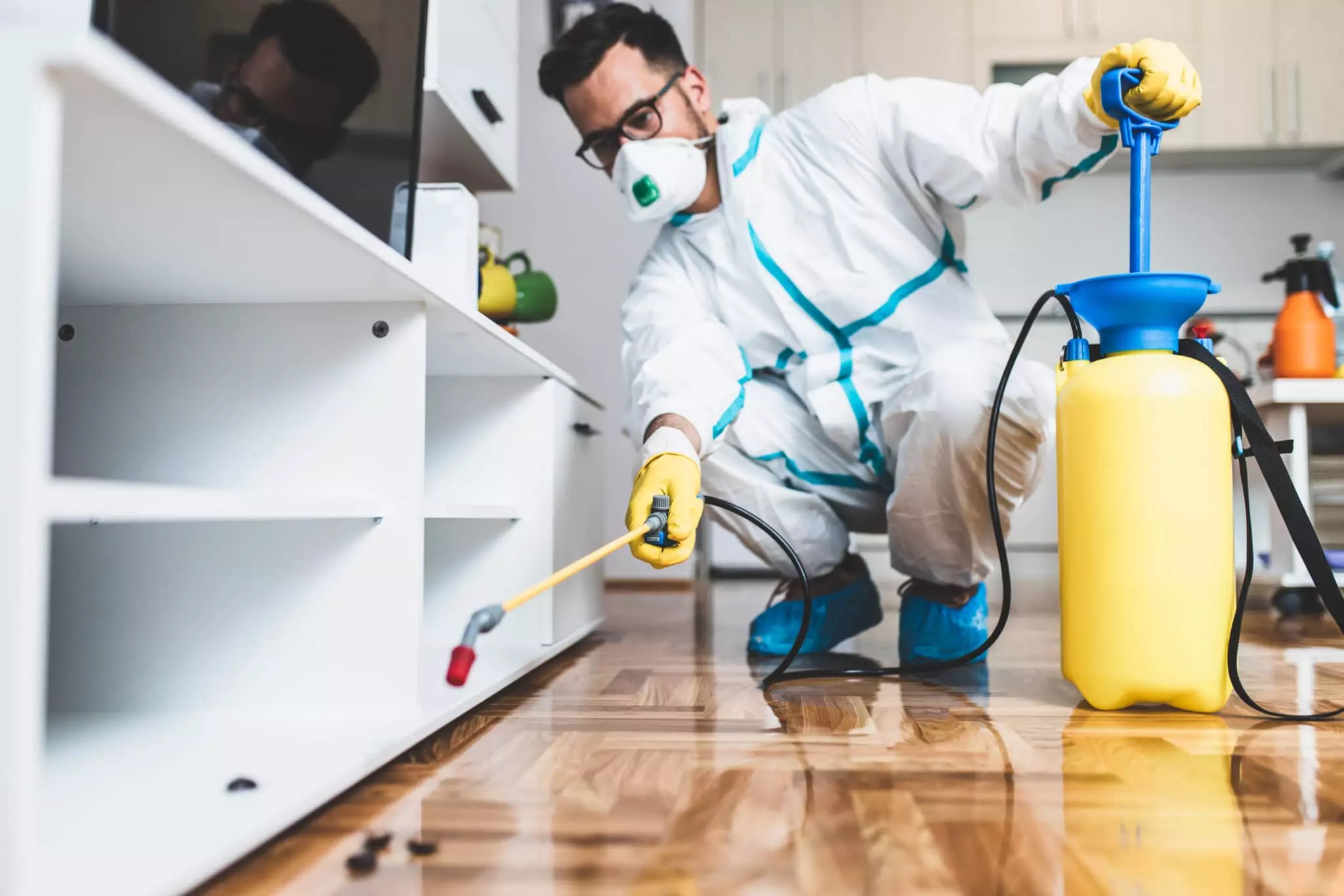Why Homeowners Rely on Pest Control Lockhart for Their Needs
Why Homeowners Rely on Pest Control Lockhart for Their Needs
Blog Article
Exploring Infestation and Therapy Techniques in the World of Pest Control
The landscape of parasite control incorporates a myriad of difficulties, especially as infestations of typical household pests remain to develop. Comprehending the habits and reproductive patterns of these hassles is crucial for creating effective therapy strategies. By integrating preventative steps with innovative administration methods, such as Integrated Pest Management (IPM), homeowners can much better safeguard their atmospheres. Nevertheless, the efficiency of these methods might differ significantly based on details situations. What underlying aspects add to the success or failure of these strategies in various setups?

Common Household Pests
When it involves managing our space, comprehending common house bugs is important. These insects not just disrupt our convenience yet can also present health threats and damage property. One of the most common house bugs consist of ants, roaches, rodents, termites, and bed bugs.
Ants, commonly seen foraging in kitchen areas, can contaminate food and establish big nests. Cockroaches, recognized for their durability, can activate allergies and spread virus. Rats, consisting of computer mice and rats, can cause structural damage and bring illness like hantavirus and salmonella. Termites, often described as "silent destroyers," can jeopardize the honesty of wood structures, resulting in costly repair services. Bed pests, although not disease providers, can create significant pain with their attacks and lead to psychological distress.
Identifying the indicators of these insects, such as droppings, nests, or bite marks, is crucial for early treatment (Pest Control Lockhart). Proper hygiene practices, sealing access points, and preserving a clutter-free environment work preventative actions. By identifying these common house pests and comprehending their actions, property owners can take positive actions to alleviate infestations, ensuring a much healthier living atmosphere
Comprehending Pest Infestations
Insect invasions can intensify quickly, transforming a small inconvenience into a considerable trouble if not attended to promptly. Common elements adding to infestations consist of bad sanitation, architectural vulnerabilities, and seasonal changes that drive parasites indoors.
Identifying the sort of bug is crucial, as different species show diverse actions and reproductive rates. For example, rodents might develop nests in surprise areas while pests like roaches flourish in wet environments. Early discovery usually hinges on recognizing signs such as droppings, nibble marks, or unusual sounds, which can suggest a problem before it ends up being extreme.
Cozy, damp climates can assist in the quick growth of bug populations, while modifications in landscape design or building and construction can inadvertently create favorable settings. An enlightened strategy to comprehending these characteristics lays the foundation for efficient pest management techniques in the future.
Treatment Techniques and Methods
Reliable therapy techniques and techniques are important for mitigating parasite problems and bring back a risk-free atmosphere. A multifaceted approach is often best, including chemical, organic, and mechanical techniques customized to the specific pest and the severity of the problem.
Chemical therapies include making use of pesticides and herbicides, which can properly remove bugs. Nevertheless, proper application and adherence to safety and security standards are essential to lessen risks to human beings and non-target organisms. Integrated Parasite Management (IPM) motivates the sensible use of chemicals as a last resource, counting instead on surveillance and limit degrees to identify treatment needs.
Organic control approaches involve introducing natural predators or bloodsuckers to minimize insect populations. This approach is progressively prominent, specifically in farming setups, as it advertises ecological sustainability.
Mechanical approaches, such as catches and barriers, give immediate alleviation from parasites without presenting chemicals. Choices include sticky catches for insects or physical barriers for rodents.
Ultimately, the selection of therapy approach need to consider the specific pest, the atmosphere, and prospective influence on human health and wellness and ecosystems. A balanced mix of these strategies can successfully manage invasions while promoting lasting pest control remedies.
Safety Nets for House
Proactively addressing insect problems prior to they rise is important for maintaining a healthy home setting (Pest Control Lockhart). Executing reliable safety nets can dramatically minimize the chance of infestations, inevitably safeguarding both your residential or commercial property and health

Appropriate landscape design also more info here plays a crucial function in avoidance. Keeping hedges and trees trimmed away from the house minimizes the chances of pests finding their way inside your home. In addition, make sure that drain systems useful source are functioning effectively to avoid standing water, which can reel in insects and various other pests.
Lastly, regular inspections are recommended. On a regular basis inspecting for indications of pest activity permits early treatment. By adopting these safety nets, property owners can produce a setting that is much less welcoming to bugs, therefore boosting their overall lifestyle and lowering the need for extensive parasite control interventions.
Commercial Parasite Control Methods
An extensive technique to industrial pest control is essential for services intending to preserve a risk-free and hygienic atmosphere. Reliable methods include a mix of routine assessments, worker training, and the application of Integrated Pest Management (IPM) techniques.
Regular assessments enable early discovery of pest task, permitting prompt intervention. Services should develop a regular schedule for these assessments, concentrating on risky areas such as cooking areas, storage spaces, and waste disposal sites. Worker training is equally critical; staff needs to be informed on the signs of bug problems and the significance of reporting them quickly.
Implementing IPM techniques helps reduce pest issues sustainably. This consists of habitat alteration, such as securing entrance points and reducing mess, as well as using all-natural deterrents prior to resorting to chemical treatments.

In addition, working together with a licensed insect control provider makes certain accessibility to specialist knowledge and sophisticated therapy options. This collaboration can discover this result in personalized insect control intends tailored to the details requirements of the company, reducing threats and improving total efficacy. Inevitably, a proactive and enlightened strategy cultivates a pest-free atmosphere, guarding both public health and wellness and company reputation.
Verdict
In verdict, effective parasite control requires an extensive understanding of typical home parasites and their behaviors, paired with targeted therapy methods. Implementing precautionary actions alongside treatment techniques such as Integrated Bug Management and biological control enhances the ability to alleviate problems.
Report this page